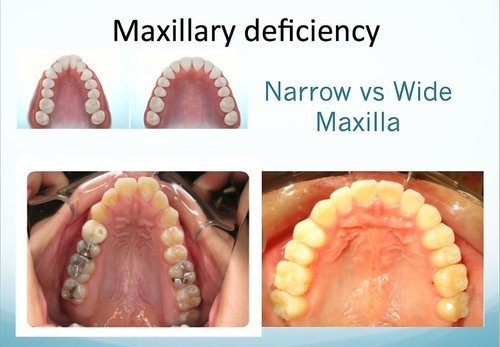CFT Supports
Myofunctional Therapy
Myofunctional Therapy is physical therapy to treat issues of the muscles and functions of the face and mouth, or Orofacial Myofunctional Disorders (OMDs).
How does CFT complement Myofunctional Therapy?
As a periodontist, Dr. Barry Gillespie began developing CFT. He discovered the strong connection between cranio-dental strain and many health conditions. CFT helps to release the tight fascia in the oral structures that influence the entire web of fascia throughout the body.
Over years of practice and teaching, Kim and Holly recognize that myofunctional impairment such as dysfunctional oral facial muscles, tethered oral ties, low tongue posture, airway obstruction and mouth breathing will inhibit the lasting effects of CFT releases. These conditions start in utero. We believe our success in treating infants with CFT will mitigate myofunctional impairment and prevent many future health issues.
For those children and adults who are experiencing issues related to oral strain and myofunctional impairment, CFT and Myofunctional Therapy can be a winning combination. Myofunctional Therapy is physical therapy for the orofacial muscles and the tongue. Kim and Holly are extremely passionate about sharing this information with clients and students.
Integrative Dental Professionals find CFT to be an influential modality for improving oral function. Please consider joining our CFT trainings to learn how dental/fascial strain and myofunctional impairment are related and how you can help people achieve better health.
What are Orofacial Myofunctional Disorders? (OMDs)
Here are some common conditions that may be associated with myofunctional impairment:
Breastfeeding issues
Sleep Apnea
Poor sleep
Waking tired/fatigue
Snoring
Crowded Teeth
Excessive cavities
Recessed and narrow jaw development
Dry Lips
Headaches
TMD- Jaw Pain
Gastrointestinal Issues
Bedwetting
ADHD
Anxiety
Facial Asymmetry
Poor Posture
Neck and Shoulder Pain
CFT will help release the fascia of the cranio-dental system to assist in achieving Myofunctional Therapy goals.
What causes Orofacial Myofunctional Disorders?
Experts agree that most OMDs occur due to poor breathing patterns. What causes poor breathing habits? Believe it or not, the answer lies in the position of your tongue. When your tongue is not in the right position, it causes you to breath through your mouth and not your nose.
Generally improper tongue position starts in utero and presents at birth as Ankyloglossia, or more commonly known as a Tongue Tie. They are often unrecognized as the root cause of infant breastfeeding issues, reflux, colic, poor sleep, poor weight gain, digestive issues, and general fussiness.
If the tongue remains tethered it inhibits proper tongue positioning contributing to malformation of the palate. As babies grow into children and adults, the structural restrictions lead to unhealthy breathing habits that then present as dental, sleep, speech, physical, and emotional problems like the ones listed above. Aside from tongue ties, another source of improper positioning is poor muscle tone in the tongue.
THE 4 GOALS OF MYOFUNCTIONAL THERAPY
-
air is filtered, warmed and moisturized
produces nitric oxide (NO) gas which is a molecule that helps fight pathogens and has anti-inflammatory properties
increases parasympathetic activity
allows for the proper exchange of O2/CO2
regulates over-breathing which happens when we breathe through the mouth
-
Contributes to the development of nasal breathing and also helps the tongue find its proper resting posture on the roof of the mouth. Lip seal keeps saliva in and air out.
-
The tongue should rest in the palate, filling the entire roof of the mouth.
The tip of the tongue should rest on the “Spot”, which is right behind the incisive papilla, the ridge behind the front teeth (see oval red marking on photo). The lips should be closed at rest and nasal breathing should occur day and night.
-
A correct swallowing pattern is achieved when the tongue presses against the roof of the mouth. If the tongue is pressing against the teeth when swallowing, it is know as a tongue thrust. A tongue thrust can lead to malocclusion, as well as issues with biting, chewing, swallowing and digesting food. It can affect speech such as lisps and issues with articulation. A correct swallow pattern will address these issues and also promotes ideal aesthetics. Where is your tongue when swallowing?

Correct tongue position

Example of Incorrect vs. Correct Tongue Position

Wide vs. Narrow Palate
LISTEN TO OUR EPISODE ON
THE MUNCH BUNCH PODCAST
LISTENING TO THE INNATE WISDOM OF THE BODY
“OMDs may affect, directly and/or indirectly, breastfeeding, facial skeletal growth and development, chewing, swallowing, speech, occlusion, temporomandibular joint movement, oral hygiene, stability of orthodontic treatment, facial esthetics, and more.”
— Academy of Orofacial Myofunctional Therapy
Got questions?
Let’s Connect
We’d love to hear from you with any questions you may have about learning CFT!







